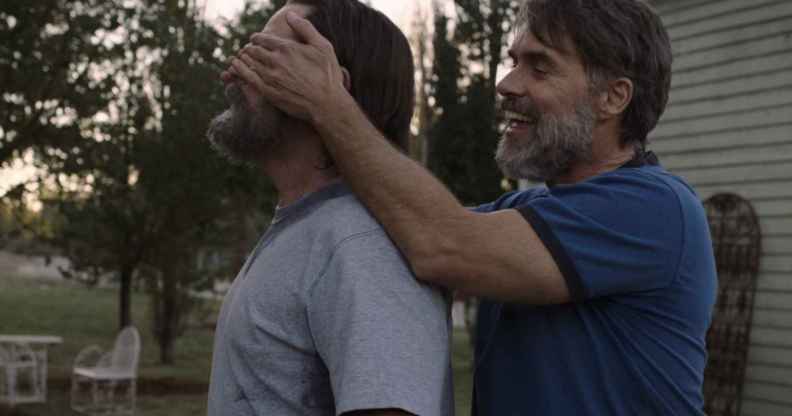The Last of Us director says he fully intended to ‘trick’ viewers into watching a gay love story

Nick Offerman as Bill and Murray Bartlett as Frank in The Last Of Us (HBO)
The third episode of The Last of Us, which explores a gay love story, is being hailed as one of the greatest TV episodes in recent memory.
Nick Offerman (Bill) and Murray Bartlett (Frank) play lovers in the series’ first major departure from the original video game, with the story focusing on the pair’s relationship before and during the outbreak of the deadly fungal infection that triggered the fall of civilisation.
Speaking to Inverse, episode director Peter Hoar spoke about having to “trick” straight audiences into becoming invested in a gay love story.
“Sometimes you have to sort of trick the rest of the world into watching these things before they’re like, ‘Oh, my God, it was two guys. I just realised,'” he explained.
“I think then they might understand that it’s all real. It’s just the same love.”
Hoar, who is gay, also touched on the character development of Bill throughout the course of the episode.
“I would definitely argue that Bill doesn’t come across as a gay man,” he continued. “It’s a little less binary than that. He is a man who never really discovered himself. He lived in a world of mistrust… He pulled himself away from society.”
Bartlett’s character never appears in the The Last of Us video game, save for a skeleton found hanging by a noose in an abandoned house next to a suicide note that blames the act on Bill’s paranoia (although if you ask us, a zombie apocalypse is a pretty good excuse for paranoia.)
In the TV adaptation – no spoilers – Frank’s end is far more gut-wrenchingly tragic. If that’s possible.
Hoar credited Frank’s character as the reason Bill discovered his sexuality, and that the adaptation of the pair’s relationship is far less about being gay than it is about two individuals simply being in love.
“[Bill] was never going to naturally discover who he was to fall in love with or who he found attractive until Frank came along. And even then, it wasn’t just about being a man, it was because he was Frank. It was because Frank is Frank. It was about making sure to keep reminding them all of that.
“It’s not as complicated as it sounds. It’s about heart and love and truth. They are kind and gentle to each other. Middle-aged men falling in love, you don’t get that all the time, so I think that was nice.”
Hoar also revealed the meaning behind the episode’s final shot: an open window with curtains waving gently in the breeze.
“I wanted a last moment with Bill and Frank, and I didn’t know how else to do it. But if we pull back through their window, [we] see the flowers that have died, which is also heartbreaking, and one of Frank’s pictures on the wall. I just thought that was our last moment. We’re coming back into the world of Frank and Bill for that one last shot because I didn’t want to go.”
If you ask any fan of the video game what an open window means to them, they’ll tell you it mirrors the The Last of Us loading screen; something Hoar didn’t originally pick up on.
Alternatively, if you ask any fan of the TV adaptation what they thought of episode three, it’s a good bet they’ll tell you that Hoar, Offerman and Bartlett ripped their heart out.
The Last of Us airs on Sundays on HBO in the US and on Mondays in the UK on Sky Atlantic and NOW TV.
How did this story make you feel?

